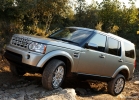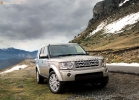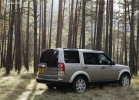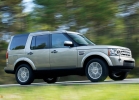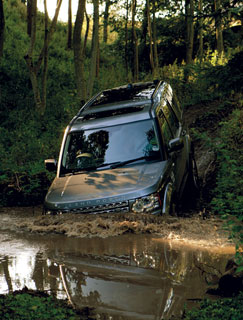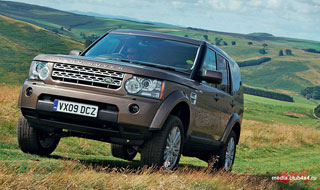Land Rover Discovery LR4 test drive since 2009 SUV
The torque of truth
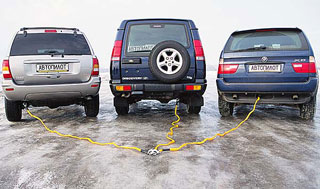 Those who are pulled forward only two out of four wheels will praise themselves to hoarse. Those who move in space for all four at once will argue which of the principles of all -wheel drive is better.
Those who are pulled forward only two out of four wheels will praise themselves to hoarse. Those who move in space for all four at once will argue which of the principles of all -wheel drive is better. Humanity did not last long on the laurels after the invention of the wheel. Realizing that two wheels are better than one, it came up with an Arbu. Then, adding another axis, cart, carriage, and it started. A little more efforts - and mechanical carts appeared. The stumbling block was the question: how much wheels should spin from the motor?
Ten years ago, all SUVs were divided, by and large, two subspecies - a permanent all -wheel drive or a connected bridge. The power from the engine was selected through the handout. The viscose coupling was the first stepson in the family of crooks. The appearance of electronics - read ABS, ESP systems, etc. - caused a number of mutations to life. The essence of this has not changed-all-wheel drive can still be either full or connected.
A constant all -wheel drive is necessary for confident driving in winter on icy, wet or frankly bad roads. If the life of the wheels flows smoothly, like asphalt on the motorway, then there is enough connected all -wheel drive. Moreover, the complication of the structure - and the classic permanent all -wheel drive requires the presence of an interdose differential - inevitably leads to a decrease in the reliability of the entire structure ?? And its rise in price.
Some SUVs with all -wheel drive connected do not have a differential in a handout. Therefore, when they are used, it should be borne in mind that all -wheel drive can only be included in the conditions of off -road, when the wheels have a relatively small adhesion to the road, and the speed of movement is small. Otherwise, even on a wet and slippery road, especially at high speed, cyclic shock loads for a transmission occur. Its details - from wheels to handout - do not tolerate such loads and quickly cover.
SUVs with a permanent drive are equipped with an interdessual differential, and to increase patency, it can be blocked. But also carefully - a blocked interdessual differential makes the behavior of the car in some situations almost unpredictable.
Designers of modern SUVs strive to get rid of all the minuses characteristic of each all -wheel drive scheme. How-this is evident in the example of three bright representatives of the Off-Road class.
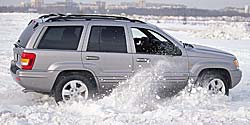
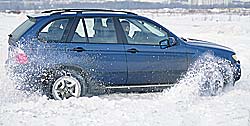
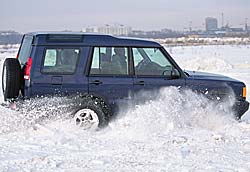
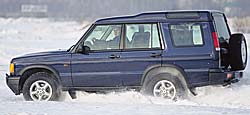
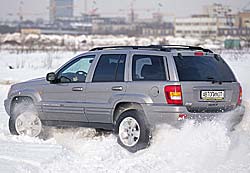
Elite individual. Land Rover is one of the oldest manufacturers of SUVs. They did nothing else there and are not going to do in the foreseeable future.
Historically, all Land Rover has a constant all -wheel drive, a blocking interdosseous differential and a handout (a demultiper with a lowering number 3.32). Actually, the handout distributes the torque of the engine between the front and rear axles of the car. The center differential is symmetrical, with the distribution of effort along the axes in a ratio of 50:50 - guarantees confident work with a constant full drive even on dry asphalt. But on a shaky surface, he can serve the poor service - if it is not blocked, then the cross -country ability is significantly reduced.
The handout (demultiper) is the main part in any serious SUV. The autopilot already spoke about the principle of its work (see no. 12, 2000). Reduced gear (gear ratio is the highest among classmates) allows you to increase the size of the torque transmitted to the car axis by more than 3 times with the same engine speed.
On older models, the lock was carried out manually, a demultiplier selector. But progress does not stand still, and all new Disco have free differentials and an electronic system that plays the role of locks by slowing down the skid wheels.
This makes sense - before that the driver had to take care of the guarantee of his movement in advance and in time to block the differential manually. Now it is only required to switch to a low gear in time - all locks will work automatically at the right time.
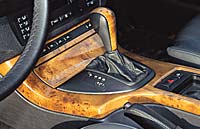
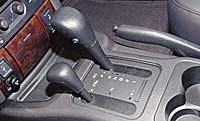
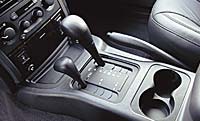
Reserve zone. Unlike Land Rover, Jeep specialized in the manufacture of SUVs with the connected front bridge. This meant the absence of differential in the handout and, accordingly, the inability to drive a car in all -wheel drive on dry asphalt. The clear plus of the concept is that in this way less fuel is consumed, and the details of the transmission wear less. On complex SUV, however, all -wheel drive and reduced gear are sequentially connected.
This continued until the Grand Cherokee thought of installing a disk coupling in the distribution of a disk coupling instead of differentials. It is very complex in its design, but on the principle of work, similar to clutch. As a result, first on the most expensive models, and then almost all where Quadra-Trac was installed, it became possible to move in all-wheel drive mode all the time.
When moving on a normal coating, the Grand rides like an ordinary rear -wheel drive car. As soon as the wheels begin to slip, the electronic unit connects the coupling, and part of the effort is transmitted to the front wheels. If you turn on the handout (4l mode), then another signal passes on the coupling, and the discs are firmly compressed, equally distributing the force between the axes.
Without calming down on the achieved, Jeep engineers went on, and the Quadra-Trac II system appeared on modern cars. A hydromechanical is installed in the place of dry coupling. Clutch discs are enclosed in a container filled with special oil. As soon as the difference occurs in the speed of rotation of the cardan shafts, the sensors give out the command, and the high pressure pump drives additional oil in a container with disks. Accordingly, the pressure increases, and the discs are pressed against each other. The force from the motor is redistributed to wheels that have the best adhesion to the surface.
At the time of the transition to low transmission, the pressure is already raised so much that this guarantees an equal distribution of torque between the front and rear wheels.
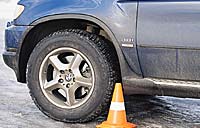
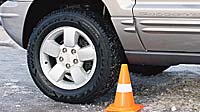
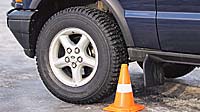
Progressive mutation. Recently, all -wheel drive machines are increasingly produced, in which the transfer box is not provided at all. Two shafts simply come out of the gearbox, which transmit the torque of the engine forward and backward. And the speed of rotation of the front and rear shafts evens out Wylian. It is she who partially blocks the center differential, redistributing torque in favor of the axis rotating at a lower speed. As a result, adhesion with road and cross -country ability increase.
But the classic Wylskyft is already in one foot in the grave. It is more often replaced by electronics that controls hydromechanical couplings or, even more progressively, works in conjunction with ABS and ESP systems. The brightest representative of this young tribe is the BMW X5. In the classical sense, this is no longer an SUV, but the dimensions and off -road qualities put it on the head above many other universals of increased cross -country ability.
The torque is transmitted to the BMW from the checkpoint to the wheels (the suspension is independent) through free differentials. The ratio of effort before: the ass is 38:62, which allows you to confidently feel not only on a bad road, but also in loose snow. The main thing here is not to sit on the belly.
Partial blocking of differentials is replaced by the BMW X5 system Adb-X (Automatic Differential Brake). Her eyes are ABS sensors and a system of dynamic movement stabilization. At that moment, when one or more wheels begin to slip, they automatically slow down, and the free power of the engine gets to those wheels that have better adhesion to the surface. The redistribution of effort is possible not only between the front and rear wheels, but also between the left and right side of the car. This is not only an undoubted plus of the Adb-X system, but also its weakness. At the time of hanging one or several wheels, a traffic stabilization system is simply triggered, which received a message that one or two wheels rotate too quickly. The system begins to strangle the motor precisely when it should be spinning at maximum speeds in order to push forward a rather heavy car. And the remaining power of two or three wheels, alas, is not enough.
So for serious jeeping too fashionable SUVs are not very good. Sometimes even the most complex electronics are not able to replace the notorious human factor. Although, who knows how bizarre the branch of evolution in the coming years is bizarre.
Text Nikolay Kachurin, photo Alexey Ilyin
Cars are provided by Major Auto, (095) 737-8257 (Land Rover Discovery and Jeep Grand Cherokee), and BMW Russland Training, (O95) 795-2919 (BMW X5).
Model/Modification Land Rover Discovery Jeep Grand Cherokee BMW X5
The permanent drive is full, the rear demultiplier is connected, the full, demultiper is constant full
Gasoline engine with multi -point electronic injection
Working volume (cubic meter) 3947 4701 2979
Power, kW (L.S.) at about./Min. 136 (185) at 4750 175 (238) at 4800 170 (231) at 5400
Gearbox 5-speed, automatic
Dynamic characteristics
Maximum speed (km/h) 170 20 202
Acceleration to 100 km/h (sec.) 11.7 8.3 8.8
Economy
Fuel consumption (l/100 km):
city \u200b\u200b23.3 15.7 17.5
highway 12.7 12.4 10.3
The price in Moscow is $ 34.5 thousand from $ 52.9 thousand from $ 64.8 thousand.
Source: "Autopilot"

